How-To Riding: 10 Biggest Mistakes
![]()
This content was originally published in Issue #20 of Transmoto Dirt Bike Magazine, 2012.
![]()
Feeling guilty? No? Well you should be, because – just like us – you’re about to find out some things you probably had no idea you were actually doing wrong. Mistakes are part of the game, and the reality is that not everyone has the natural talent to make riding look as effortless as Stefan Merriman, Chris Hollis, Chad Reed or Ben Townley. Stuffing up from time to time comes with the territory of riding dirt bikes, but it doesn’t give you an excuse to repetitively make the same mistakes. So how do you know what the most commonly made errors are on and off the bike, and how to stop repeating them? Well, we threw out the same questions to a cross-section of mates, colleagues, Pros and industry A-listers to help narrow it down for us. What we’ve come up with for this issue of How To: Biggest Mistakes is a list of 10 errors that are as common as the Herpes virus in Sydney’s Kings Cross. No doubt they’ll be affecting your performance whenever and wherever you hit the track or trail. Now, we’re not suggesting you’re guilty of all 10 in one hit, but it’s probably about time you asked your mates for some honest feedback on what it is you might be doing wrong, and then work on not making them again in the future!
![]()
Elbows By Your Side
![]()
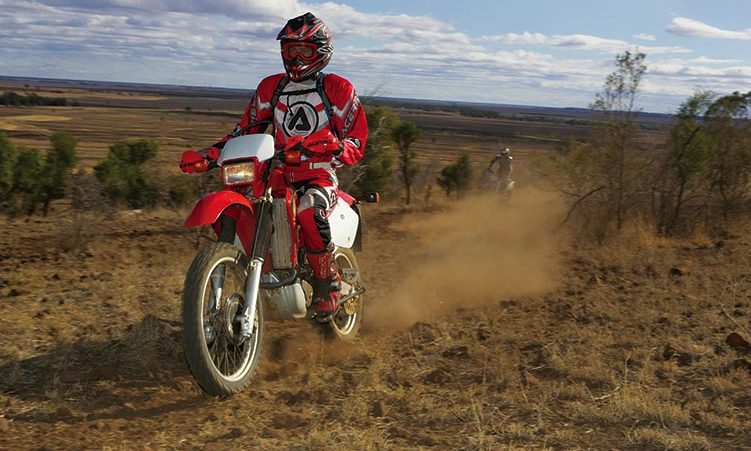
We’re not talking about the start of the chicken dance here; riding with your arms in the wrong position is one of the biggest traps people fall into the habit of doing. Can you remember the last time you’ve seen a fast rider – one who’s in command of their machine – pacing around the track or trail with their arms locked to their side? Sure you can name one or two, but compared to the mainstream, your defence is looking pretty weak. Now, we’re not saying there’s only one way to hold your elbows, but a good general rule of thumb is that you aim to envision clamping a volleyball under each wing. At first, you’ll notice a huge increase in strength, then your arms will become an extension of your forks and the suspension will work better for it. And on top of all that, you’ll save energy battling that once twitchy front-end.
Stopping Before A Big Hill Climb
![]()
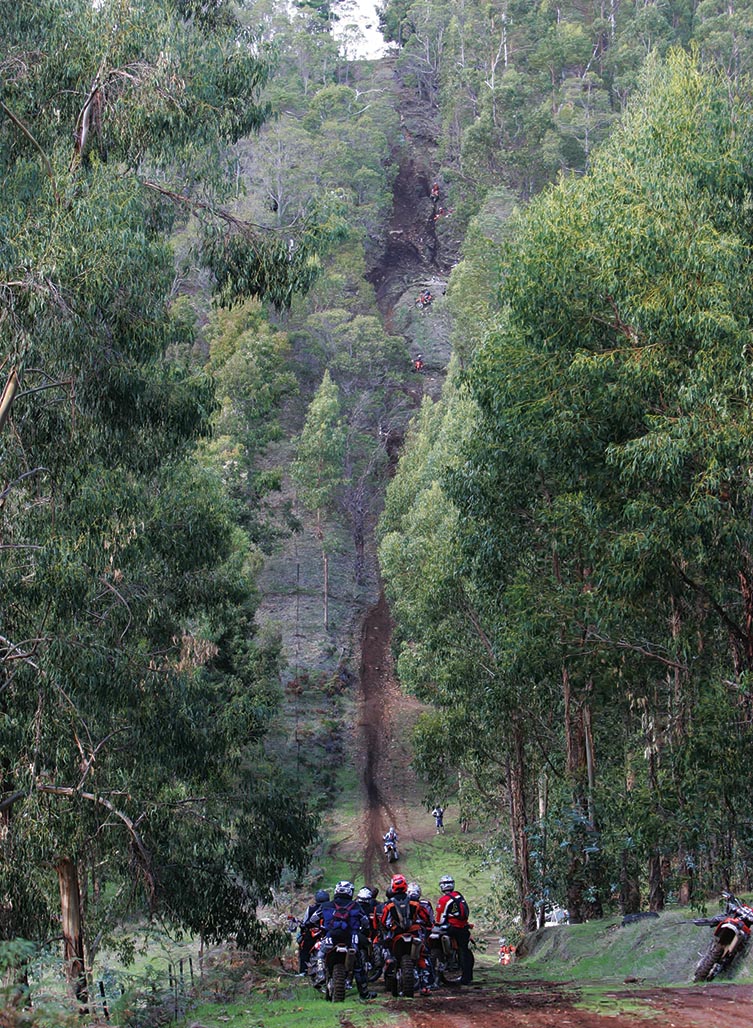
Think about it for a second. Momentum is your friend when you’re faced with a steep, tricky climb, so why kill it at the bottom of a hill? Talk to any seasoned enduro stalwart and you’ll quickly learn that stopping and starting is a guaranteed way to instantly fail. Not only will you psyche yourself out, you’ll get stuck halfway up and wheelspin like crazy when you try to get going after you finally pick another line. To avoid ending up like hanging flies in a spider’s web next time you approach a hill like the guys in the image, stop well before the hill – if you absolutely have to – spot your line, and be prepared to be fluid on the bike to adjust your line during the ascent. Remember to stay in the standing attack position and hold a constant speed. You should’ve also picked a gear that you think will best get you up the hill, hopefully without changing down, and stay in it for as long as possible.
![]()
Sitting Down Everywhere
![]()
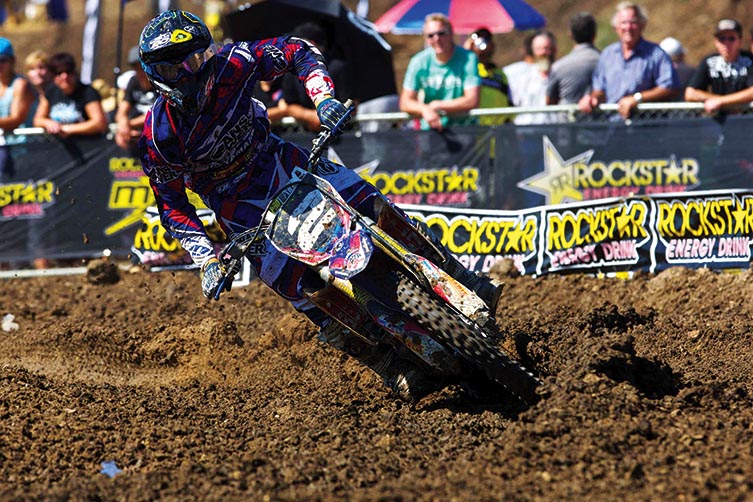
There’s no excuse for it, so stand up! Unless you’re cornering – and even that’s no excuse at times – you should always aim to ride in the standing attack position. Standing on the pegs makes shifting the bike’s mass from side to side a lot easier, and you’ll retain a much better sense of balance. You can drive with your inside calves to stand the bike up or push with your outside knee to lean the bike over, and even push your weight backwards at the flick of a switch to lighten the front wheel. Apart from your upper torso, your legs and arms are the only limbs that should be an extension of the bike and its suspension. Let the bike do all the work, and never the other way around.
![]()
Poor Suspension Set-Up
![]()
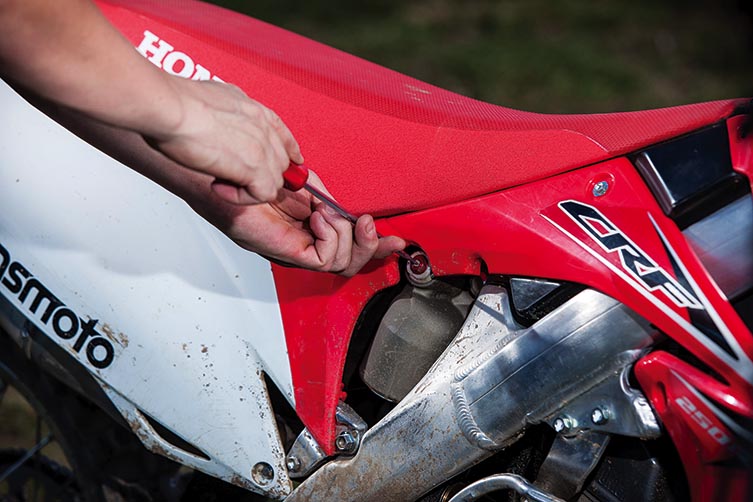
It doesn’t matter if you’ve got a new stead or an old battler, take the time to research baseline suspension set-up specs for your bike. It’ll only take 10 minutes to check the sag on your shock, and ballpark your compression and rebound clickers. Don’t know what they are? Get on the web, talk to owners of similar bikes in the pits or even give your local bike shop a call. Even upgrading to the correct rate fork and shock springs for your weight can make a monumental difference to your bike’s handling and, more importantly, your enjoyment levels. But remember, this isn’t a one-size-fits-all gig. Invest the time to find out what works and what doesn’t for you.
![]()
Sitting Before The Apex
![]()
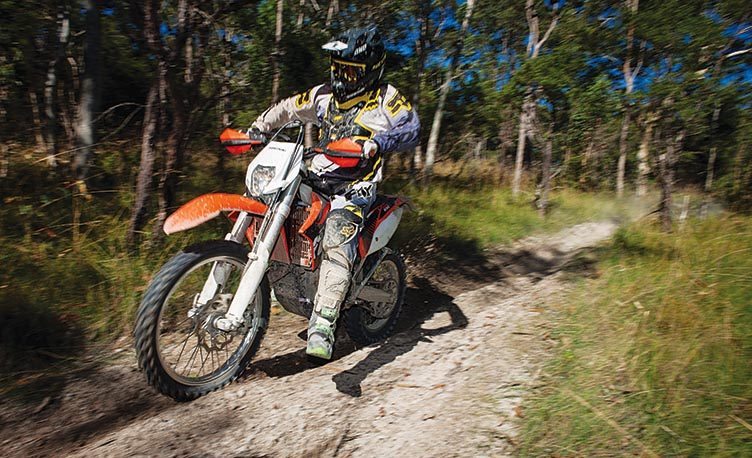
It’s the ultimate riding failure. We’re not road riders and the track is always rough. Don’t ruin your balance and bike control by sitting down before the apex as you enter corners. Your suspension won’t work as efficiently as it should, your ability to spot lines will be impaired and you’ll tire yourself out much quicker than you would if you had just remained standing that extra second or two. Stand into the apex for every corner. Once you hit it, then sit, look ahead and roll on the throttle. You’ll be so much smoother as a result.
![]()
Failing To Eat or Hydrate Properly
![]()

Eight Weet-Bix accompanied by a bowl of milk first thing in the morning before a day in the saddle, and then nothing until Maccas that evening, just doesn’t cut it as far as professional nutritionists are concerned. While there’s nothing wrong with drinking plenty of H20 throughout the day, not eating or refuelling with some quality electrolyte replacement products will adversely affect your concentration levels and muscle energy stores. Not only will you cramp quicker and for longer, you’ll severely affect your body’s ability to recover post-ride and throughout the following day. If you just can’t face anything in your stomach while on the bike, at least take some supplements.
![]()
Awkward Lever Angles
![]()
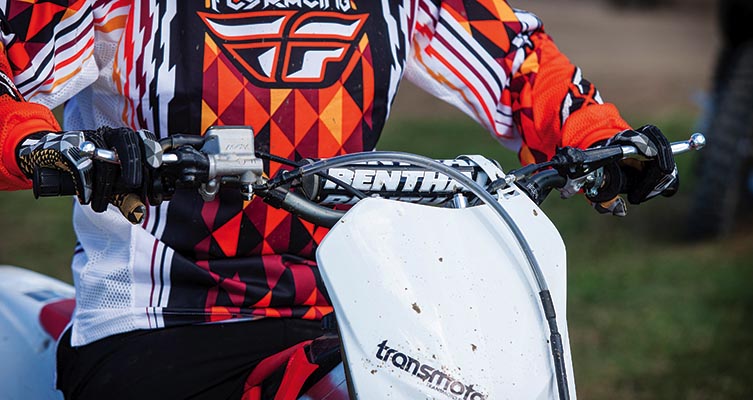
If you don’t know what a fad is, then you had better load up Google quick smart. It’s been over two years since impressionable young punks finally got over the lever-up phase – something that came and went like wildfire in the American AMA Lites class. Not only is running your levers ridiculously high a problem, but so too is having them too low – like they did in the old-school grasstrack days. Both positions put undue strain and stress on your forearms, exacerbating the onset of painful arm pump. Do yourself a favour; put your bike on the stand, jump into the standing attack position while placing your braking and clutch fingers on the levers. Now, taking note of the angle of your arms, enact the movement of riding through whoops. What you’ll feel is a strain on your hands and wrists where the maximum extension angles exist – aim to set your lever heights within that realm. Theoretically, when you’re in the middle of a squat, your arms, wrists, fingers and levers should all be in one straight line – around 20 degrees below horizontal.
![]()
Looking At Your Front Wheel
![]()
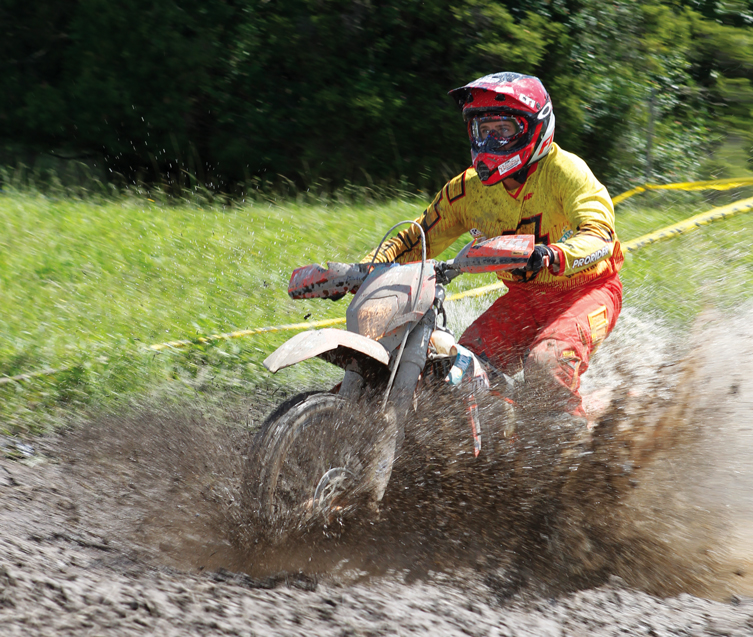
One of the most fundamental and common mistakes every rider can be guilty of is barely looking past the tip of their front fender. Ideally, you should be scanning the track 20 to 30 metres in front of you at all times. Not looking ahead means you’re constantly reacting to the track or trail, when you should be proactively working out the best lines as you approach them. It’s particularly important in ruts (in turns or on straights) where the more you can focus on an exit point ahead of you (like Chris Hollis here), and ride to that – rather than picking and bobbling your way through them – the smoother your riding will become.
![]()
Bad Inside Leg Form
![]()
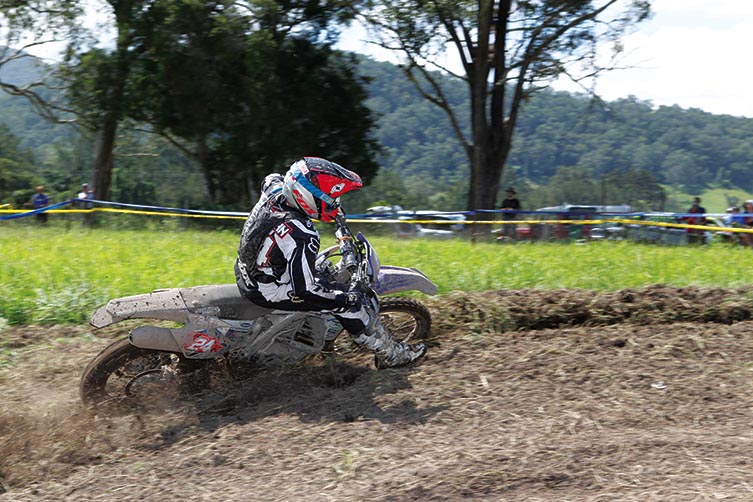
The biggest mistake you can make here is using your inside leg like as a counter-balance or a prop, sliding it along the ground and leaning on it as you round a corner. Not only can you run the risk of snagging your heel, breaking an ankle or tweaking the ACL in your knee, you’ll also affect your balance for the entire turn and be in the wrong position at the exit. Unless you know the condition of the terrain in the corner, or you’re dragging a handlebar, the only place your foot should be is hovering an inch or so off the ground and neatly tucked next to the front axle. Positioning your leg there will help drive weight into the front tyre and give it more traction. Plus, you can quickly dab your foot on the ground if you feel the front wheel lose traction.
![]()
Lack Of Preparation
![]()
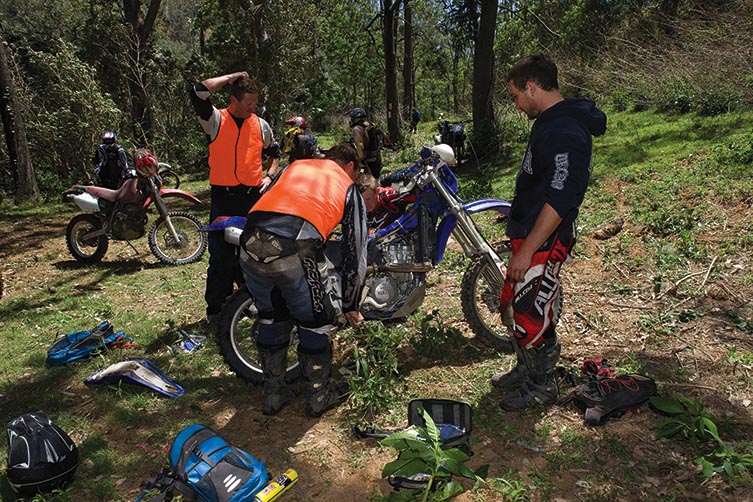
Riders failing to arm themselves with even a minimal set of tools and commonly used replacement parts in their toolbox or bumbag is an all too common occurrence. It only takes a fouled plug, derailed chain, clogged air filter or even a loose gearshifter bolt to ruin your ride. So why let something so simple screw your day? Don’t be like these guys and embarrassingly raid other riders’ tool stash. Spend a little extra pre-ride time and money to consolidate a well-rounded tool and parts kit for the track or trail, and ride forever in the glorious glow only good preparation can provide.
Related Content
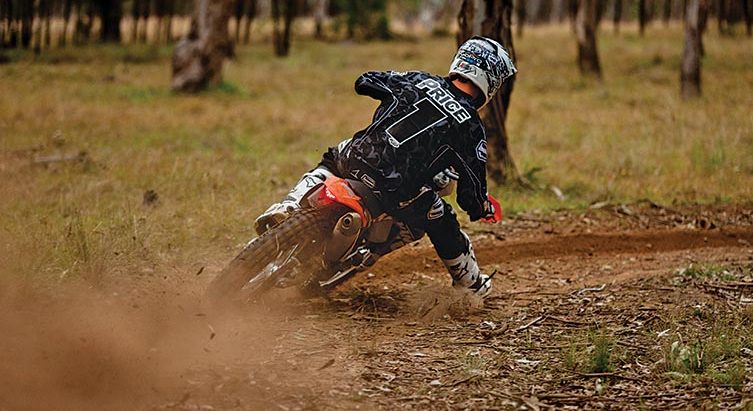
HOW-TO: CORNER SPEED
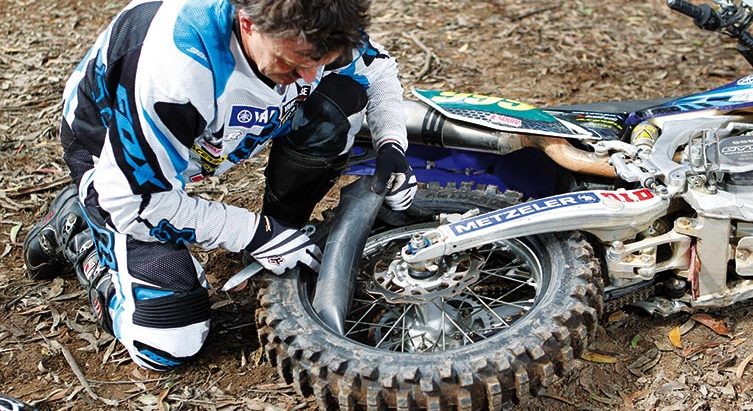
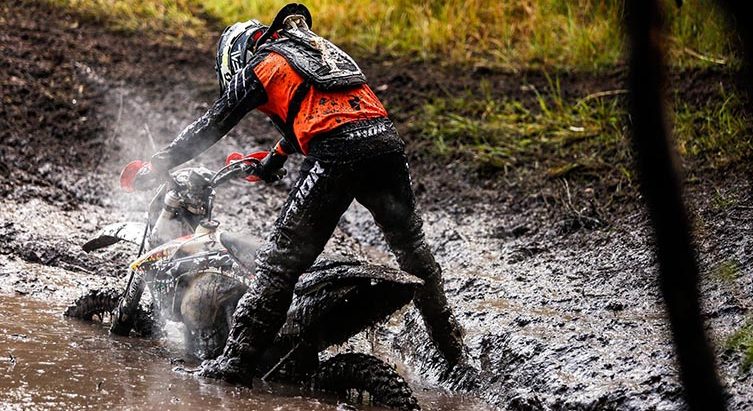





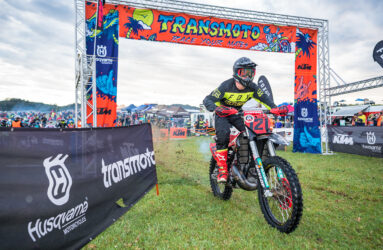
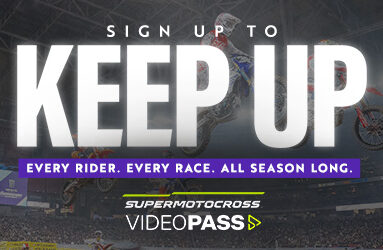

Be the first to comment...